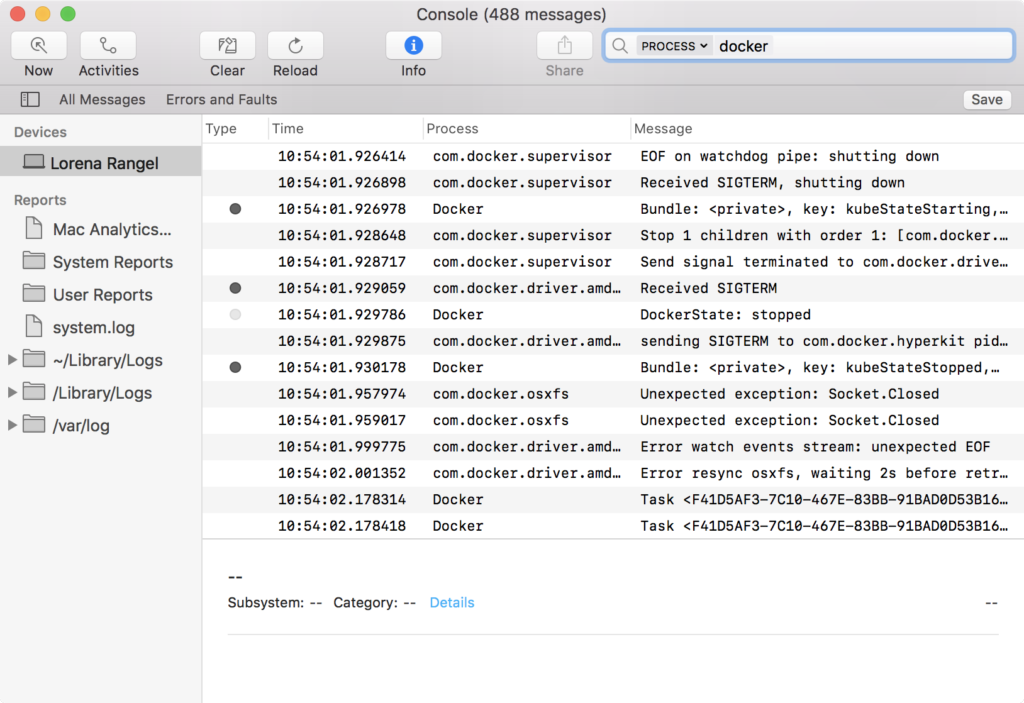4th chunk of `content/manuals/desktop/troubleshoot-and-support/troubleshoot/_index.md`
dc567f05cdc861be93d763a7c68f225ffbb2e5b0747074950000000100000797
2. Run the self-diagnose tool:
```console
$ /opt/docker-desktop/bin/com.docker.diagnose gather
```
{{< /tab >}}
{{< /tabs >}}
The tool runs a suite of checks and displays **PASS** or **FAIL** next to each check. If there are any failures, it highlights the most relevant at the end of the report.
You can then create an issue on GitHub:
- [For Linux](https://github.com/docker/desktop-linux/issues)
- [For Mac](https://github.com/docker/for-mac/issues)
- [For Windows](https://github.com/docker/for-win/issues)
## Check the logs
In addition to using the diagnose option to submit logs, you can browse the logs yourself.
{{< tabs group="os" >}}
{{< tab name="Windows" >}}
In PowerShell, run:
```powershell
$ code $Env:LOCALAPPDATA\Docker\log
```
This opens up all the logs in your preferred text editor for you to explore.
{{< /tab >}}
{{< tab name="Mac" >}}
### From terminal
To watch the live flow of Docker Desktop logs in the command line, run the following script from your preferred shell.
```console
$ pred='process matches ".*(ocker|vpnkit).*" || (process in {"taskgated-helper", "launchservicesd", "kernel"} && eventMessage contains[c] "docker")'
$ /usr/bin/log stream --style syslog --level=debug --color=always --predicate "$pred"
```
Alternatively, to collect the last day of logs (`1d`) in a file, run:
```console
$ /usr/bin/log show --debug --info --style syslog --last 1d --predicate "$pred" >/tmp/logs.txt
```
### From the Console app
Mac provides a built-in log viewer, named **Console**, which you can use to check
Docker logs.
The Console lives in `/Applications/Utilities`. You can search for it with
Spotlight Search.
To read the Docker app log messages, type `docker` in the Console window search bar and press Enter. Then select `ANY` to expand the drop-down list next to your `docker` search entry, and select `Process`.
